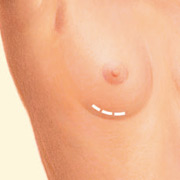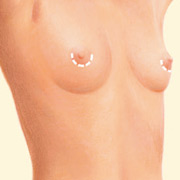Would You Like a Consultation?
Click the button to the right on your mobile phone to be connected with one of our friendly and knowledgeable staff and we will set up an appointment for you!
BREAST FEEDING AND BREAST IMPLANTS: “I had no issues breastfeeding, thanks to Dr. Rose, and they still look AMAZING! I LOVE MY IMPLANTS!” –Katie is an influencer with over one million followers. Since her breast augmentation in Houston, she’s been able to maintain their shape throughout two pregnancies and has successfully breastfed both kids. Read more →
National Radio Personality/ Entertainer/ Hostess @TheresaRockface of #Iheartradio 94.5 THE BUZZ visited Houston plastic surgeon, Dr. Franklin Rose for a breast lift (without implants) read her story and view more before and after breast lift photos on our blog: Read more →
Houston Hooters Calendar Girl Rachel shares her secondary revision breast augmentation story due to pain in her breast caused by previous augmentation performed elsewhere. Read more →
Breast implants or breast augmentation involves using implants to fulfill your desire for fuller breasts or to restore breast volume lost after weight reduction or pregnancy.
Enhancing your appearance with breast augmentation
If you are dissatisfied with your breast size, augmentation surgery is a choice to consider. Breast augmentation can:
Implants also may be used to reconstruct a breast after mastectomy or injury.
What it won’t do
Breast augmentation does not correct severely drooping breasts. If you want your breasts to look fuller and to be lifted due to sagging, a breast lift may be required in conjunction with breast augmentation.
Breast lifting can often be done at the same time as your augmentation or may require a separate operation. Your plastic surgeon will assist you in making this decision.
Is it right for me?
Breast augmentation is a highly individualized procedure and you should do it for yourself, not to fulfill someone else’s desires or to try to fit any sort of ideal image.
Breast augmentation may be a good option for you if:
What happens during breast augmentation surgery?
Step 1 – Anesthesia
Medications are administered for your comfort during the surgical procedure. The choices include intravenous sedation and general anesthesia. Your doctor will recommend the best choice for you.
Step 2 – The incision
Incisions are made in inconspicuous areas to minimize visible scarring. You and your plastic surgeon will discuss which incision options are appropriate for your desired outcome. Incision options include:



Incisions vary based on the type of implant, degree of enlargement desired, your particular anatomy, and patient-surgeon preference.
Step 3 – Implant choice
Breast size and shape are important, so be honest and open about your expectations when talking with your surgeon.
Implant type and size will be determined not just on your desired increase in size but more importantly on your breast anatomy, skin elasticity and body type.
Options for Breast Implants
Saline implants are filled with sterile salt water. They can be filled with varying amounts of saline which can affect the shape, firmness and feel of the breast. Should the implant shell leak, a saline implant will collapse and the saline will be absorbed and naturally expelled by the body.
Silicone implants are filled with an elastic gel. The gel feels and moves much like natural breast tissue. If the implant leaks, the gel may remain within the implant shell, or may escape into the breast implant pocket.
A leaking implant filled with silicone gel may not collapse. If you choose these implants, you may need to visit your plastic surgeon regularly to make sure the implants are functioning properly. An ultrasound or MRI screening can assess the condition of breast implants.
Implant manufacturers occasionally introduce new styles and types of implants, so there may be additional options available.
Currently Saline implants are FDA-approved for augmentation in women 18 years of age and older.
Currently Silicone implants are FDA-approved for augmentation in women 22 years of age and older.
Saline or silicone implants may be recommended at a younger age if used for reconstruction purposes.
Step 4 – Inserting and placing the implant
After the incision is made, a breast implant is inserted into a pocket either:
The method for inserting and positioning implants depends on the type of implant, degree of enlargement desired, your body type, and your surgeon’s recommendations.
Step 5 – Closing the incisions
Incisions are closed with layered sutures in the breast tissue and with sutures, skin adhesive or surgical tape to close the skin. Over time the incision lines will fade.

Step 6 – See the results
The results of breast augmentation are immediately visible. Over time, post-surgical swelling will resolve and incision lines will fade. Satisfaction with your new image should continue to grow as you recover and realize the fulfillment of your goal for fuller breasts.
The decision to have breast augmentation surgery is extremely personal and you’ll have to decide if the benefits will achieve your goals and if the risks and potential complications are acceptable.
Your plastic surgeon and/or staff will explain in detail the risks associated with surgery. You will be asked to sign consent forms to ensure that you fully understand the procedure you will undergo and any risks or potential complications.
The risks include:
Breast implants do not impair breast health. Careful review of scientific research conducted by independent groups such as the Institute of Medicine has found no proven link between breast implants and autoimmune or other systemic diseases.
Other important considerations:
After a post-surgical recovery period of 24 to 48 hours and an additional reduced-activity period of a few days, you will likely experience soreness and swelling for a few weeks.
Exercise and normal activity can resume at the direction of your plastic surgeon. Over time, post-surgical swelling will decrease and incision lines will fade.
When you go home
If you experience shortness of breath, chest pains, or unusual heart beats, seek medical attention immediately. Should any of these complications occur, you may require hospitalization and additional treatment.
The practice of medicine and surgery is not an exact science. Although good results are expected, there is no guarantee. In some situations, it may not be possible to achieve optimal results with a single surgical procedure and another surgery may be necessary.
Be careful
Following your physician’s instructions is key to the success of your surgery. It is important that the surgical incisions are not subjected to excessive force, abrasion, or motion during the time of healing. Your doctor will give you specific instructions on how to care for yourself.
The results of your breast augmentation surgery will be long-lasting. You will find it easier to wear certain styles of clothing and swim wear.
Like many women who have had breast augmentation, you may also have a boost in self confidence.
Implants may need to be replaced or revised
It’s important to know that your breast implants are not permanent and may require replacement during your lifetime. You should expect to have future visits with your plastic surgeon to discuss changes in your breasts.
Over time, your breasts can change due to aging, weight fluctuations, hormonal factors and gravity. If, after a period of years, you become dissatisfied with the appearance of your breasts, you may choose to undergo a breast lift or implant exchange to restore a more youthful contour.
Continue to follow your plastic surgeon’s instructions and attend follow-up visits as scheduled.
Cost is always a consideration in elective surgery. A surgeon’s cost for breast augmentation may vary based on his or her experience, the type of breast implant used, as well as geographic office location. Dr. Franklin Rose offers patient financing plans in Houston for plastic and cosmetic surgery procedures, so be sure to ask. Utopia Plastic Surgery & Medspa, and Franklin A. Rose, M.D. are exclusively partnering with Care Credit to offer financing up to $40,000 with 0% interest financing for up to two years! Apply online today at www.carecredit.com. The application process is quick and easy with no impact on credit scoring. Can be used for any service we offer including Houston breast augmentation, breast reduction, breast reconstruction, mastopexy, rhinoplasty, abdominoplasty, liposuction, lasers, SecretRF, TruSculpt, radiofrequency treatments, filler injections, and more.
Cost may include:
Most health insurance plans will not cover cosmetic breast augmentation surgery, related complications or another surgery to revise the appearance of your breasts. Some carriers even exclude breast diseases in patients who have breast implants. You must carefully review your health insurance policy.
Your satisfaction involves more than a fee
When choosing a plastic surgeon for breast augmentation, remember that the surgeon’s experience with breast implants and your comfort with him or her are just as important as the final cost of the surgery.
Click the button to the right on your mobile phone to be connected with one of our friendly and knowledgeable staff and we will set up an appointment for you!